Table of Contents
Tired of endless bicep curls with dumbbells, and still not seeing your arms grow? There's a better way! Kettlebells aren't just for swings and squats; they're a secret weapon for building seriously impressive arms. Forget those tiny, isolated movements; we're talking functional strength and real muscle growth. This isn't about chasing a pump; it's about building powerful, resilient arms. In this article, we'll show you exactlyhow to get bigger arms with kettlebells, focusing on exercises that engage more than just your biceps. We'll break down the best moves for your biceps and triceps, show you how to combine them for maximum impact, and even give you a sample workout to get you started. We'll tackle common mistakes, and help you understand how to use kettlebells effectively for arm development. Get ready to ditch the gym machines and unlock the power of kettlebell training for bigger, stronger arms. Let's get to work!
Understanding Kettlebell Training for Arm Growth

Understanding Kettlebell Training for Arm Growth
It's Not Your Typical Bicep Curl
Okay, so you want bigger arms, and you're eyeing those kettlebells. That's awesome, but let's get one thing straight: kettlebell training isn't like your typical bodybuilding routine. It's not about isolating muscles, like those endless bicep curls you see at the gym. Instead, kettlebell workouts are all about full-body movements that build functional strength. This means your arms will get worked, but as part of a bigger picture. You'll be engaging your core, legs, and back, all while your arms are getting stronger. Think of it as building a powerful foundation that also happens to make your arms look amazing.
I remember when I first started with kettlebells. I was so used to the "pump" from isolation exercises that the first few sessions felt weird. I was working hard, but I wasn't feeling that immediate bicep burn. But man, the results after a few weeks were crazy. I was stronger overall, and my arms looked more defined, not just puffed up.
Why Kettlebells Are Great for Arm Development
So, why are kettlebells so effective for building arm muscle? Well, they create a unique kind of resistance. Unlike dumbbells, the kettlebell's center of gravity is offset, forcing your muscles to work harder to stabilize the weight. This constant engagement leads to increased muscle activation. Also, the dynamic nature of kettlebell exercises means you're not just moving the weight up and down; you're swinging, pressing, and pulling in different planes of motion. This builds strength and power throughout your entire arm, not just in one specific area. This means more overall growth and better looking arms.
Kettlebell Benefit | Why It Matters for Arms |
|---|---|
Offset Center of Gravity | Forces muscles to stabilize, increasing activation. |
Dynamic Movements | Works arms in multiple planes, building overall strength. |
Full-Body Engagement | Arms work as part of a larger system, enhancing functional strength. |
Movement, Not Just Muscles
Look, kettlebells aren't magic. You won't get massive arms overnight, but they are incredibly effective when used correctly. The key is to think about movement patterns, not just individual muscles. When you perform a kettlebell swing, for example, you're not just working your legs and glutes; your arms are also engaged in stabilizing and controlling the weight. This is the kind of integrated training that builds real-world strength and leads to impressive arm development. It’s about working smarter, not just harder. So, ditch the idea of isolated curls and embrace the power of full-body kettlebell movements.
It's like building a house; you don't just focus on the walls, right? You need a strong foundation, a solid frame, and then the walls can go up. Kettlebells help build that foundation for your arms and the rest of your body.
Best Kettlebell Exercises for Bigger Biceps
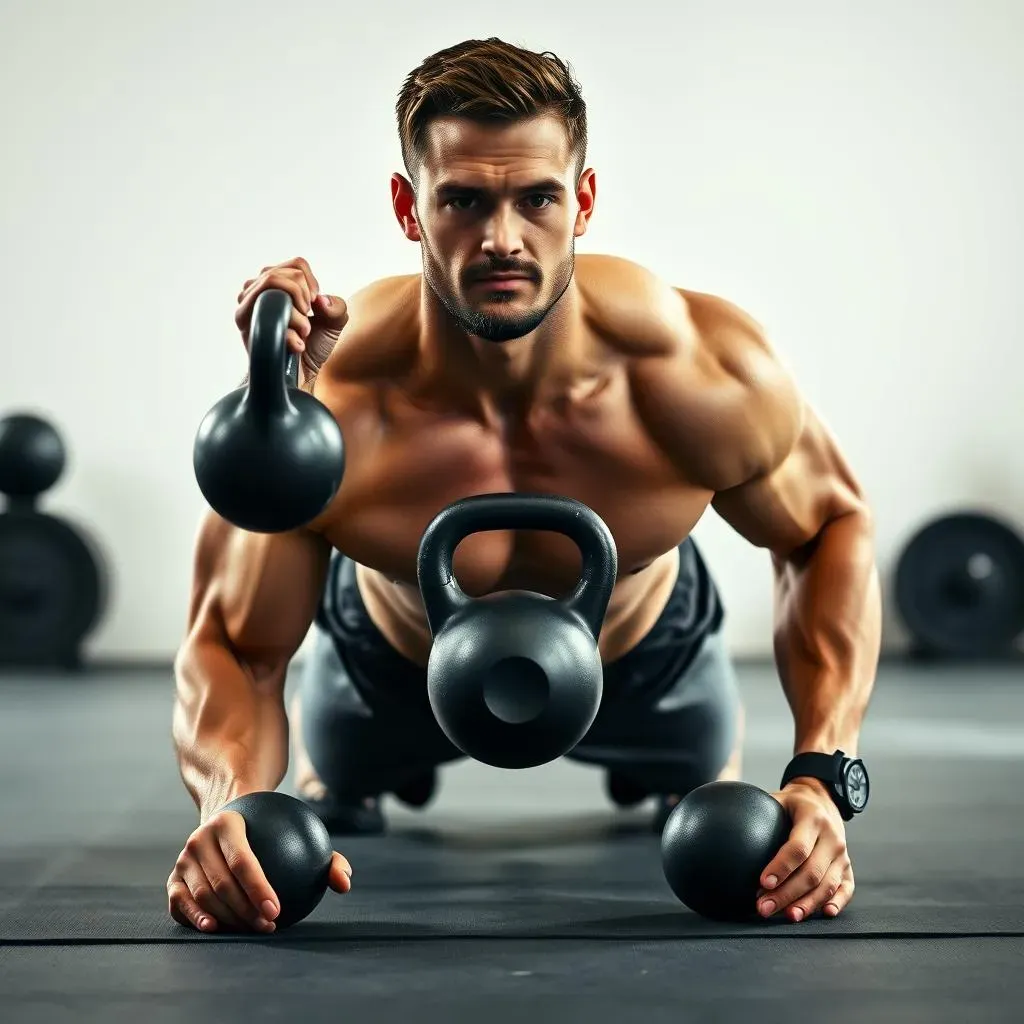
Best Kettlebell Exercises for Bigger Biceps
Kettlebell Curls: A Classic Twist
Alright, let's talk biceps. Yes, you can do curls with kettlebells, and they're surprisingly effective. But we're not talking about your standard dumbbell curl here. The kettlebell's shape and offset weight change the game. You can hold the kettlebell by the horns (the sides of the handle) or by the bell itself, which challenges your grip and forearm muscles as well. The key is to maintain control throughout the movement. Don't just swing the weight up. Focus on squeezing your bicep at the top and slowly lowering the kettlebell back down. This will make sure you get the most out of each rep. I find that holding the kettlebell by the horns gives me a better feel for the movement.
I've seen people try to curl way too heavy with kettlebells. It's not about how much you can lift, it's about how well you can control the weight. Start light, focus on proper form, and gradually increase the weight as you get stronger. Trust me, your biceps will thank you for it.
Kettlebell Renegade Rows: Biceps and Back Working Together
Now, let's move beyond the basic curl. The kettlebell renegade row is a killer exercise that not only works your biceps but also engages your back, core, and shoulders. You start in a plank position with your hands on the kettlebells, then row one kettlebell up towards your chest, keeping your core tight and your body stable. This is not just a bicep exercise, it's a full-body powerhouse that builds incredible strength and stability. The added benefit is that your biceps are working hard to stabilize the weight while you perform the row. This is where that functional strength really comes into play.
It can be a challenging exercise at first, so start with lighter weights and focus on maintaining a stable plank position. Don't let your hips sag or rotate. Once you master the form, you'll be amazed at how much strength and definition you can build in your arms and back.
Exercise | Bicep Focus | Other Muscles Worked |
|---|---|---|
Kettlebell Curls | Primary Bicep Activation | Forearms, Grip |
Kettlebell Renegade Rows | Secondary Bicep Activation | Back, Core, Shoulders |
Kettlebell Goblet Squat: Biceps in a Supporting Role
Finally, let's talk about the kettlebell goblet squat. You might be thinking, "Wait, a squat for biceps?" Hear me out. The goblet squat is a fantastic exercise for building overall lower body strength, but it also engages your biceps as a stabilizer. You hold the kettlebell close to your chest while you squat, which forces your biceps to work hard to keep the weight in place. This is a great example of how kettlebell exercises can work your arms in a functional way, even when you're not directly targeting them. It's like a sneaky bicep workout that also makes your legs and glutes stronger.
I like to think of the goblet squat as a "two-for-one" deal. You're building leg and glute strength, while also giving your biceps a good workout. Remember, it's all about full-body movement and functional strength. Don't underestimate the power of compound exercises like this one.
Effective Kettlebell Exercises for Triceps Development

Effective Kettlebell Exercises for Triceps Development
Kettlebell Overhead Extensions: Triceps in the Spotlight
Okay, now let's shift our focus to the back of your arms – the triceps. These muscles are crucial for pushing movements and contribute significantly to overall arm size. Kettlebell overhead extensions are fantastic for targeting your triceps. You can perform these either standing or seated. Hold the kettlebell with both hands, extend your arms overhead, and then slowly lower the kettlebell behind your head, bending at the elbows. The key here is to keep your elbows tucked in and avoid letting them flare out. This will ensure that the tension stays on your triceps. It's a simple, yet incredibly effective exercise for building tricep strength and size. I always feel this one the next day!
I remember when I first started doing these, I thought I was strong enough to use a heavy weight. Big mistake! My form was terrible, and I wasn't feeling it in my triceps at all. I had to drop the weight and focus on the movement. It made all the difference. It's not about ego lifting; it's about proper form.
Kettlebell Floor Presses: Triceps and Chest Combo
Next up, we have the kettlebell floor press. This exercise is similar to a bench press, but you're doing it on the floor, which can actually be easier on your shoulders. Lie on your back with a kettlebell in each hand, press the kettlebells up towards the ceiling, focusing on squeezing your triceps at the top of the movement. The floor limits the range of motion, which means you are focusing more on the tricep part of the movement, rather than the chest. This is a great way to build tricep strength and power. Plus, it also hits your chest and shoulders, which is always a nice bonus. The floor press is a good way to feel the triceps working and it doesn't require a bench, you can do it anywhere.
Exercise | Tricep Focus | Other Muscles Worked |
|---|---|---|
Kettlebell Overhead Extensions | Primary Tricep Activation | Shoulders, Forearms |
Kettlebell Floor Presses | Primary Tricep Activation | Chest, Shoulders |
Kettlebell Skullcrushers: A Tricep Challenge
Lastly, let's talk about kettlebell skullcrushers. Don't let the name scare you; they're not as dangerous as they sound. You can do these lying on the floor or on a bench. Hold the kettlebell with both hands, extend your arms straight up, and then slowly lower the kettlebell towards your forehead, bending at the elbows. Keep your elbows tucked in and focus on squeezing your triceps as you extend your arms back up. This exercise is a real challenge for your triceps and a great way to build serious strength and definition. It's important to use a controlled movement with this exercise, don't just drop the weight down, it will hurt your elbows.
I’ve seen people rush through these, and it’s not pretty, or effective. Take your time, feel the triceps working, and don't go too heavy too soon. It's better to do fewer reps with good form than a bunch of reps with poor form. Remember, it's about quality, not quantity. "The pain you feel today will be the strength you feel tomorrow."
Combining Kettlebell Movements for Full Arm Workouts
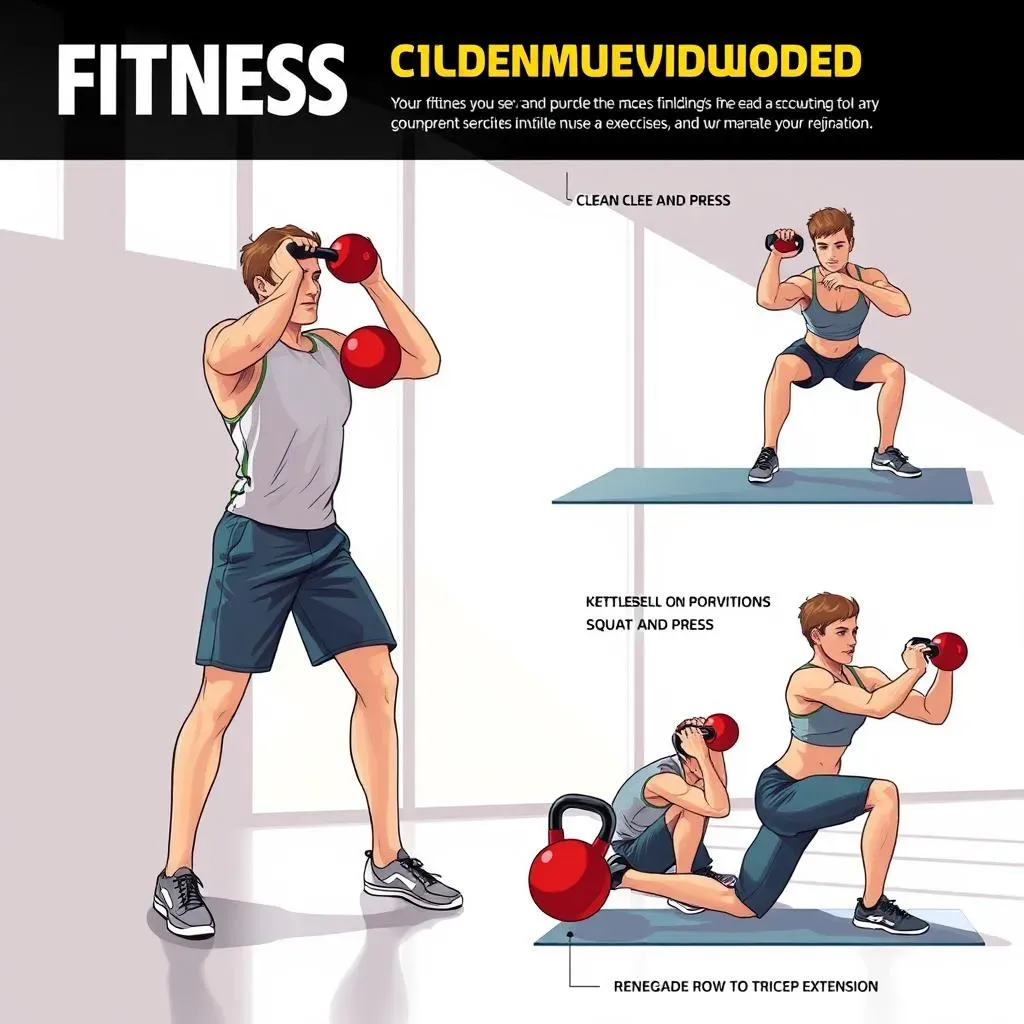
Combining Kettlebell Movements for Full Arm Workouts
Why Combine? Maximize Your Gains
Alright, so you've got the individual exercises down, that's great! But here's the thing: combining movements is where the magic really happens. Instead of just doing bicep curls or tricep extensions separately, think about linking them together in a way that challenges your arms from all angles. This approach not only saves time but also increases the intensity of your workout, leading to better muscle growth and strength gains. It's like creating a symphony instead of just playing individual notes; the combination is more powerful than the sum of its parts. When you combine exercises, you're forcing your body to work harder and adapt more effectively.
I remember when I first started combining kettlebell movements, I was surprised at how much more challenging the workouts became. It wasn't just about lifting heavier weight, it was about controlling the weight through different movements, engaging my entire body in the process. This is the kind of training that builds real-world strength and endurance, and it's way more fun than just doing isolated exercises.
Sample Combination Exercises
Let's get into some practical examples. How about a "clean and press," which is a full-body exercise that hits your biceps, triceps, shoulders, and legs? You clean the kettlebell up to your chest, then press it overhead. It's a great way to work multiple muscle groups at once. Or maybe a "squat and press," where you perform a squat while holding the kettlebells, and then press them overhead as you stand up. The "renegade row to tricep extension" is another killer move, where you do a renegade row and then extend the kettlebell behind your head, hitting both your biceps and triceps. These are just a few examples, but the possibilities are endless. The idea is to link movements that complement each other, creating a fluid and challenging workout.
Don’t be afraid to get creative and experiment with different combinations. The key is to find what works best for your body and your goals. And remember, always prioritize proper form over lifting heavy weight. It’s better to do a few reps with good form than many reps with poor form.
Combination Exercise | Muscles Worked | Benefits |
|---|---|---|
Clean and Press | Biceps, Triceps, Shoulders, Legs | Full-body strength, power development |
Squat and Press | Biceps, Triceps, Shoulders, Legs, Glutes | Lower body and upper body strength, coordination |
Renegade Row to Tricep Extension | Biceps, Triceps, Back, Core | Upper body strength, core stability |
Sample Kettlebell Arm Workout for Strength and Size
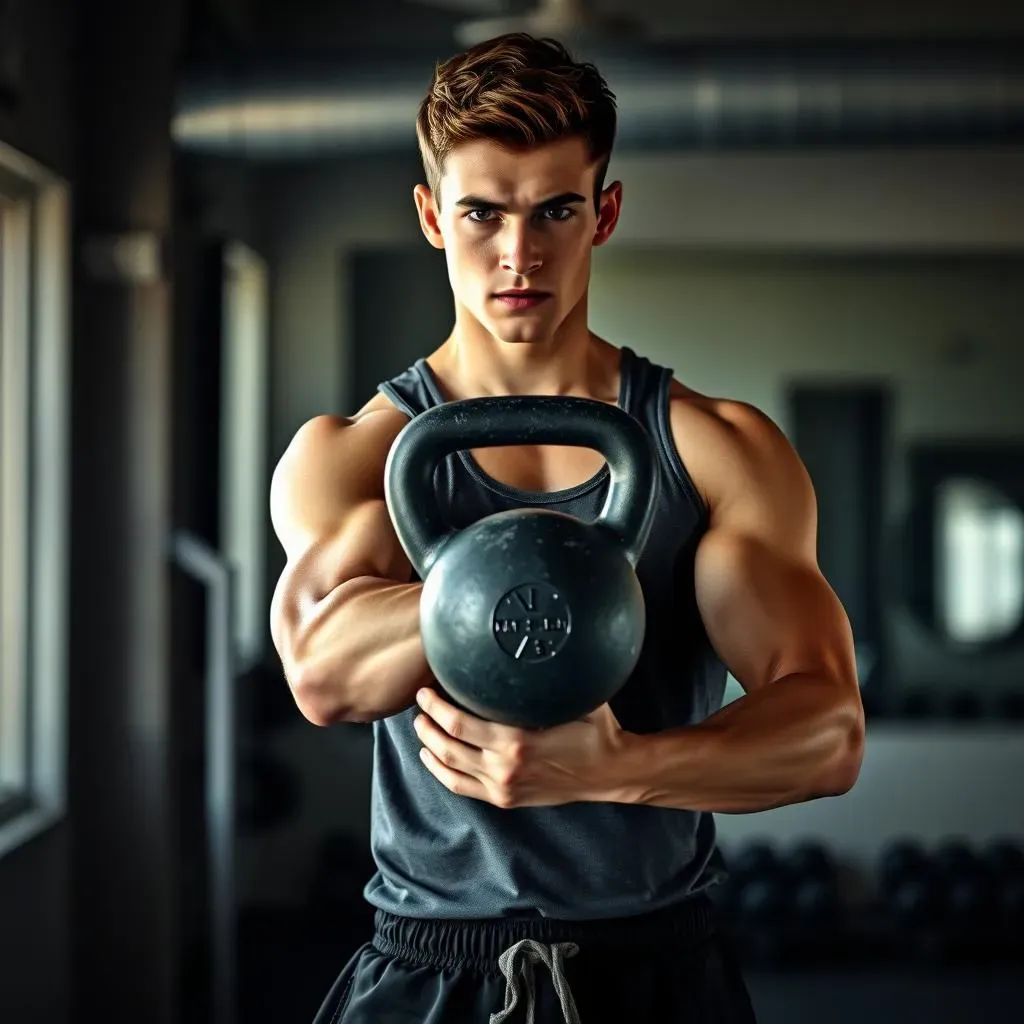
Sample Kettlebell Arm Workout for Strength and Size
Okay, let's put it all together and create a workout you can actually use. This isn't about spending hours in the gym; it's about effective, efficient training. We're going to focus on a circuit style approach, where you move from one exercise to the next with minimal rest. This will keep your heart rate up, burn more calories, and build both strength and endurance. Remember, it's not about lifting the heaviest weight possible. It's about using proper form and feeling the muscles working. Start with a weight that challenges you but allows you to maintain control. As you get stronger, you can gradually increase the weight. This workout is designed to hit all the major muscles in your arms: biceps, triceps, and forearms.
I like to think of a workout like a good recipe, you got your ingredients, and you need to put it in the right order to get the best result. This is why I created this workout for you. This is what I do, and it works for me, so I think it will work for you as well.
Here's the workout:
- Warm-up: 5 minutes of light cardio, like jumping jacks or arm circles.
- Kettlebell Curls: 3 sets of 8-12 reps.
- Kettlebell Renegade Rows: 3 sets of 8-12 reps per side.
- Kettlebell Overhead Extensions: 3 sets of 10-15 reps.
- Kettlebell Floor Presses: 3 sets of 10-15 reps.
- Kettlebell Goblet Squats: 3 sets of 12-15 reps.
- Cool-down: 5 minutes of stretching, focusing on your arms and shoulders.
Take a 60 second rest between sets, and 90 seconds rest between exercises. This workout should take you about 30-40 minutes. Remember to listen to your body and adjust the workout as needed. If you're new to kettlebells, start with lighter weights and focus on mastering the movements. Don't rush through the workout; take your time and focus on proper form. It's better to do fewer reps with good form than many reps with poor form.
Exercise | Sets | Reps |
|---|---|---|
Kettlebell Curls | 3 | 8-12 |
Kettlebell Renegade Rows | 3 | 8-12 (per side) |
Kettlebell Overhead Extensions | 3 | 10-15 |
Kettlebell Floor Presses | 3 | 10-15 |
Kettlebell Goblet Squats | 3 | 12-15 |
This is just a starting point, feel free to modify it based on your fitness level and goals. You can add more sets, increase the weight, or change up the exercises as you progress. The key is to stay consistent and keep challenging yourself. Don't be afraid to experiment with different exercises and find what works best for you. The most important thing is to enjoy the process and have fun with it. Kettlebell training is a journey, not a destination. You'll see progress over time, and you will build bigger and stronger arms.
You know, I used to hate working out. I would just do the same movements every week without any results, until I discovered kettlebells. Now, I actually look forward to my workouts, because I know I'm making progress and having fun at the same time. And trust me, when you start seeing the results, it's a real motivator. "The only way to do great work is to love what you do."
Tips for Maximizing Your Kettlebell Arm Gains
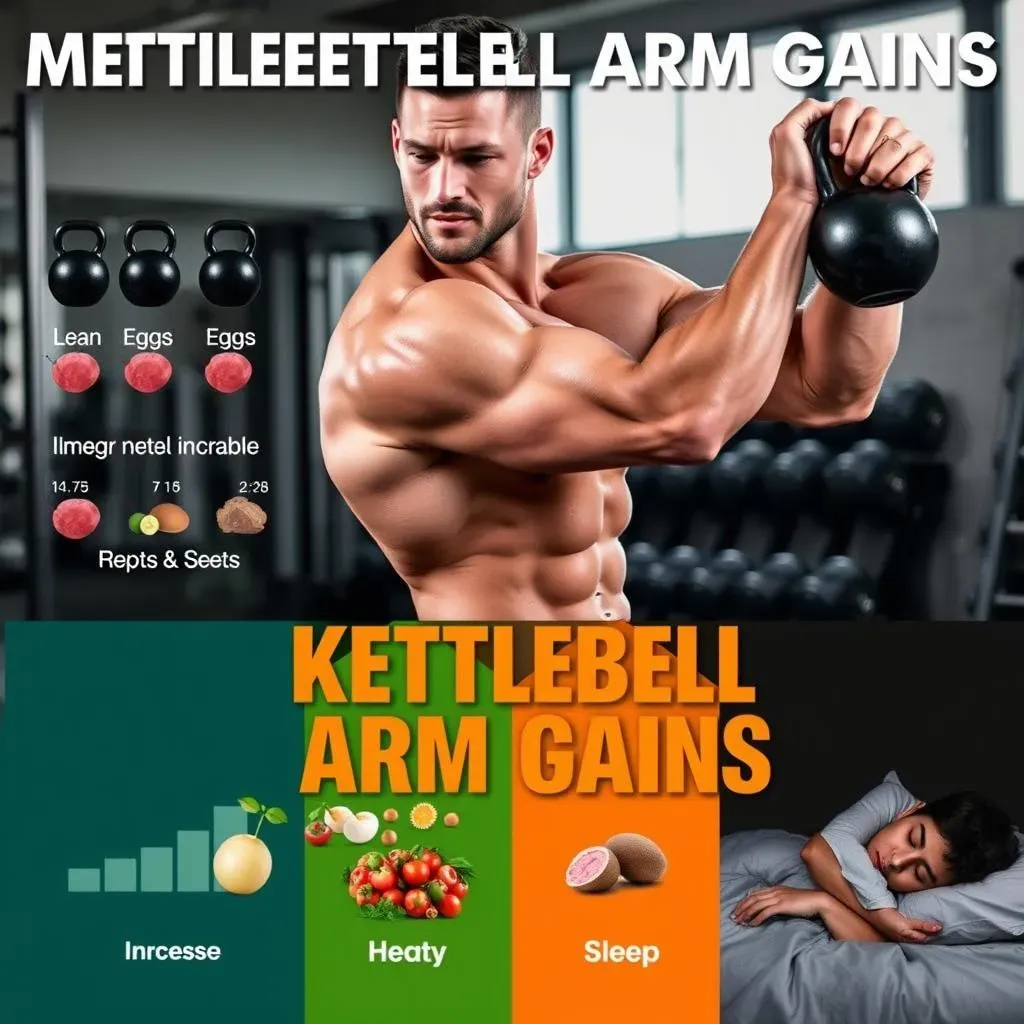
Tips for Maximizing Your Kettlebell Arm Gains
Progressive Overload: The Key to Growth
Okay, so you're doing the workouts, that's great! But if you want to see real progress, you need to understand progressive overload. This basically means gradually increasing the demands on your muscles over time. You can do this in a few ways: lift heavier weights, do more reps, or add more sets. The idea is to consistently challenge your body so it has to adapt and grow stronger. Don't just stick to the same weights and reps every time; you'll plateau. Think of it like leveling up in a video game; you can't just keep fighting the same weak monsters, you need to face tougher challenges to get stronger.
I remember when I first started, I was so excited to lift heavy. I'd always try to increase the weight every session, which is not a good idea, I got some injuries. Now, I focus on small, incremental increases, and my body is thanking me for it. It's not about going big every time, it's about consistent progress over time. Remember, slow and steady wins the race. "The greatest of follies is to sacrifice health for any other kind of happiness."
Nutrition and Rest: Fueling Your Gains
You can workout all day, but if your nutrition and rest are not on point, you won't see the results you want. Your body needs the right fuel to build muscle, so make sure you're eating enough protein. Think lean meats, eggs, and beans. Also, don't forget to eat plenty of fruits and vegetables for vitamins and minerals. It's like building a house; you can't just put up the walls without a solid foundation. And just as important, make sure you're getting enough sleep. Your muscles repair and grow when you're resting, not while you're working out. Aim for at least 7-8 hours of quality sleep each night.
I used to think I could just out-train a bad diet, but I was wrong. When I started paying attention to what I was eating and making sure I was getting enough sleep, it made a huge difference in my progress. It's not just about working hard in the gym; it's about taking care of your body outside the gym as well. It's a 24/7 job. "Take care of your body. It's the only place you have to live."
Tip | Details |
|---|---|
Progressive Overload | Gradually increase weight, reps, or sets |
Protein Intake | Eat enough protein to support muscle growth |
Sufficient Sleep | Aim for 7-8 hours of quality sleep per night |
Common Mistakes to Avoid When Training Arms with Kettlebells
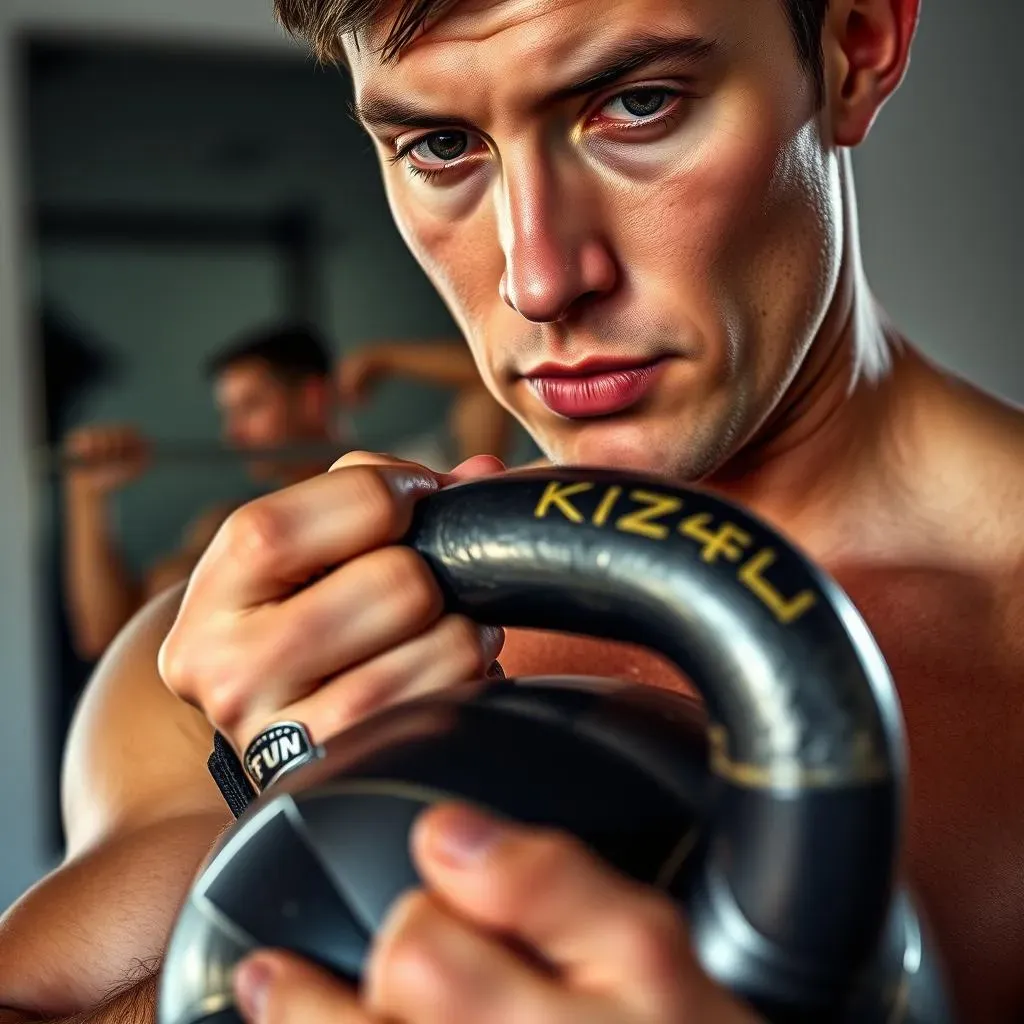
Common Mistakes to Avoid When Training Arms with Kettlebells
Going Too Heavy Too Soon
Okay, let's talk about mistakes, because we all make them, especially when we're starting something new. One of the biggest errors I see is people trying to lift too heavy too soon. They get all excited and want to grab the biggest kettlebell they can find, and that's a recipe for disaster. You need to build a solid foundation of strength before you start lifting heavy weights. If you try to lift too much too soon, your form will suffer, and you'll end up getting injured. You won't be working your muscles effectively, and you'll be putting unnecessary stress on your joints. So, leave your ego at the door and start with a weight that challenges you but allows you to maintain proper form. It's not about how much you can lift, it's about how well you can lift.
I remember when I first started, I was so eager to impress myself that I went way too heavy. I could barely do a few reps, and my form was terrible. I ended up tweaking my shoulder and had to take a break from training for a few weeks. That taught me a valuable lesson: patience is key. It's better to start light and gradually increase the weight over time. It's a marathon, not a sprint. "The secret of getting ahead is getting started."
Neglecting Proper Form
Another common mistake is neglecting proper form. You might think you're doing the exercises correctly, but if your form is off, you're not going to get the results you want, and you might even hurt yourself. Pay close attention to how you're moving your body. Are you keeping your core engaged? Are your elbows tucked in? Are you controlling the weight throughout the entire range of motion? If you're not sure, it's a good idea to watch some videos or even get a few sessions with a qualified trainer. Proper form is the foundation of effective training. It's like building a house; if the foundation is weak, the whole thing will crumble.
I’ve seen people swinging kettlebells all over the place, and it’s a disaster. They're not engaging the right muscles, they're putting unnecessary stress on their joints, and they're not getting any results. It's better to do fewer reps with good form than many reps with poor form. It's about quality, not quantity. "Quality is not an act, it is a habit."
Mistake | Consequences |
|---|---|
Going Too Heavy Too Soon | Poor form, injury risk, ineffective training |
Neglecting Proper Form | Ineffective training, muscle imbalances, injury risk |
FAQ About Kettlebell Arm Training

FAQ About Kettlebell Arm Training
Is Kettlebell Training Enough for Arm Growth?
Okay, so you're wondering if kettlebells are *the* answer to bigger arms, right? Well, here's the deal: kettlebells are incredibly effective for building arm strength and size, but they're not a magic bullet. They work your arms in a functional way, engaging multiple muscles at once, which is awesome for overall development. However, if you're looking for the kind of isolated muscle growth you might get from bodybuilding, you might need to supplement your kettlebell training with some other exercises. But for most people, kettlebells alone can definitely get you some impressive arm gains. It's all about how you use them, and the intensity you bring to your workouts.
I like to think of kettlebells as a versatile tool in your fitness toolbox. They can do a lot, but sometimes you need other tools to finish the job. It's like being a chef; you wouldn't just use one knife for everything, you'd use different knives for different tasks. Kettlebells are your go-to all-rounder, but sometimes you need a specialist. But if you are just starting, kettlebells are the best option. "The secret of getting ahead is getting started."
How Often Should I Train My Arms With Kettlebells?
Alright, let's talk about frequency. How often should you be hitting those kettlebells to get those arms growing? Well, it really depends on your fitness level and how your body responds to training. If you're new to kettlebells, start with 2-3 times a week, with a day of rest in between. This will give your muscles time to recover and rebuild. As you get stronger, you can gradually increase the frequency of your workouts. But remember, more isn't always better. Overtraining can lead to injury and burnout. It's all about finding that sweet spot where you're challenging your muscles without overdoing it.
I used to think that training every day would get me results faster, but I was wrong. My body was constantly sore, and I wasn't making any progress. Once I started giving my muscles enough time to recover, I started seeing much better results. Remember, rest is just as important as training. "The greatest of follies is to sacrifice health for any other kind of happiness."
Question | Answer |
|---|---|
Is kettlebell training enough for arm growth? | Yes, but may need to supplement for isolated growth. |
How often should I train my arms with kettlebells? | 2-3 times a week with rest days, adjust as you progress. |